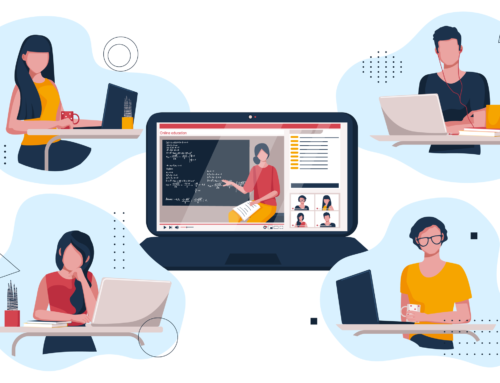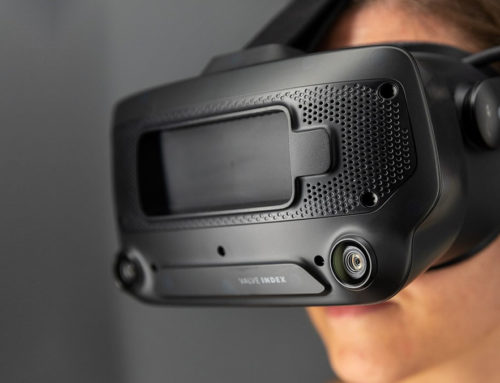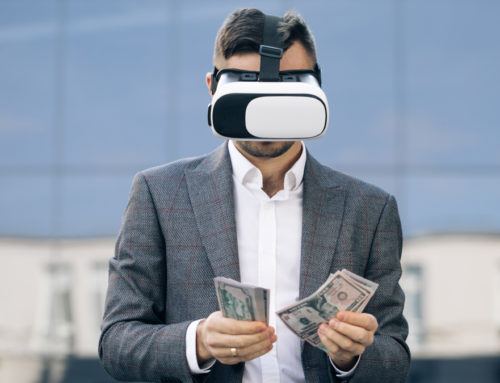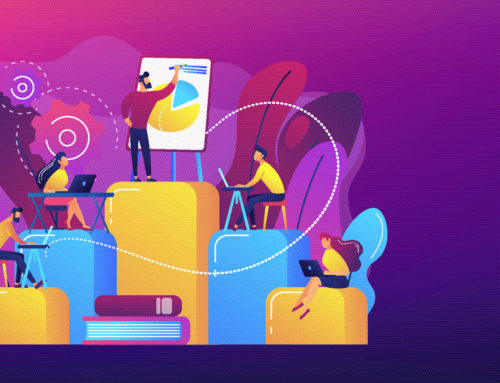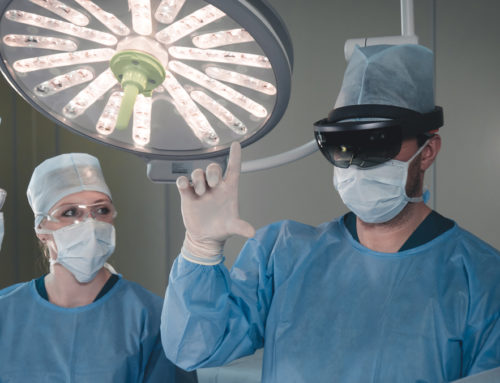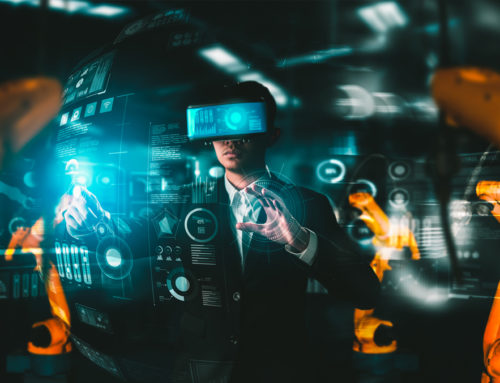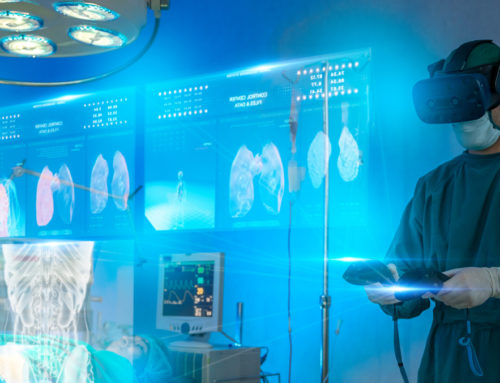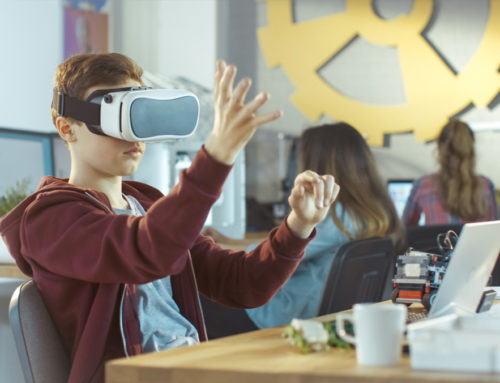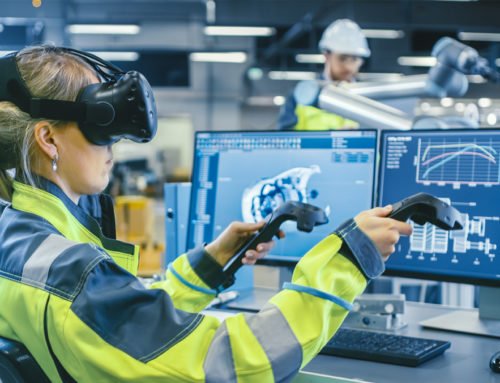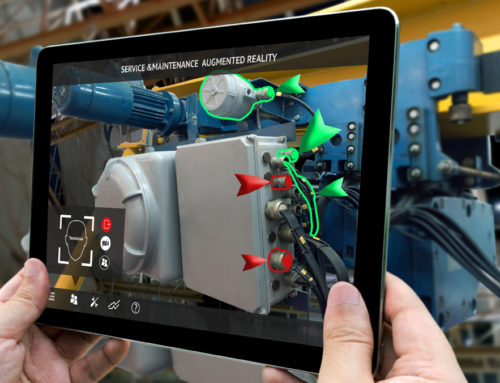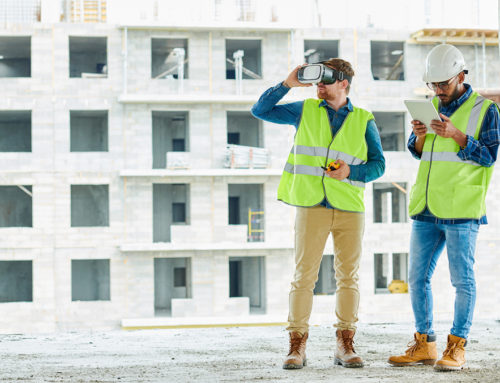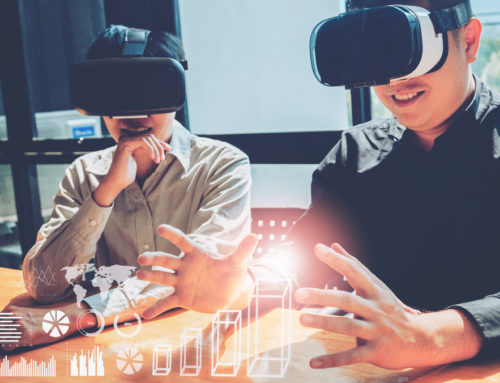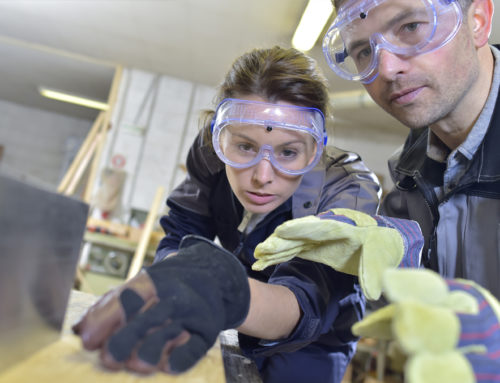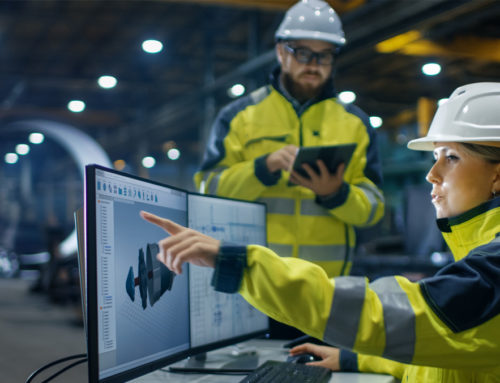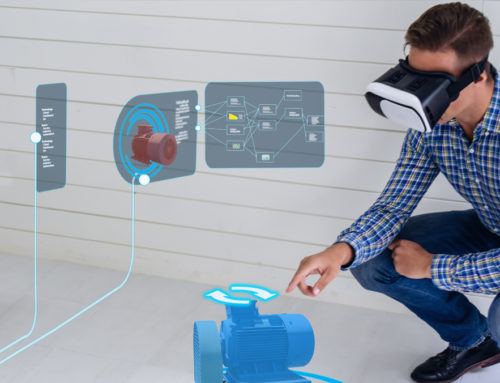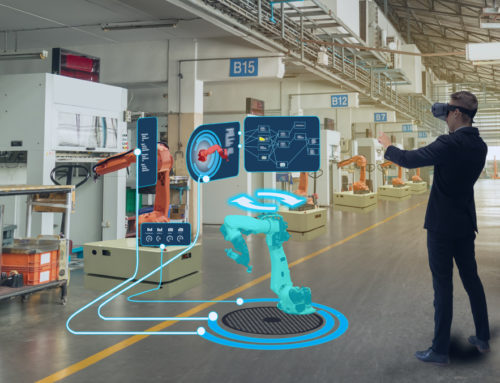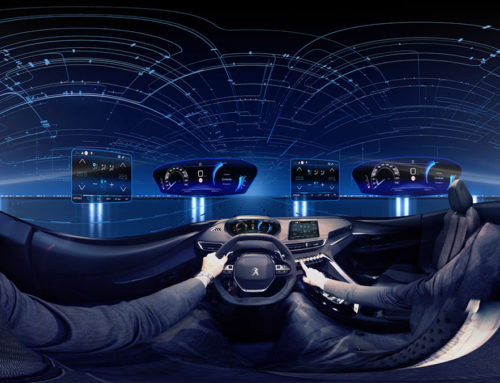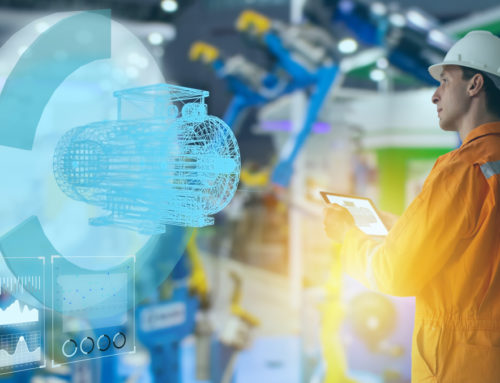Introduction
By training in the workplace, as opposed to in an offsite classroom based environment, structured on the job training methods offer successful ways to make sure that employees have the skills they need to work safely and productively. What’s more, it’s often cost effective for employers and ensures that employees learn skills quickly and retain knowledge for longer.
On the job training is tried and tested across all types of workplaces and sectors. From being coached by a colleague through to being armed with a user manual for technical tasks, on the job training tools and techniques work for employers and employees alike. But over recent years, businesses have been turning to digital innovation to boost workplace learning and put their business ahead of the game.

How immersive technologies are revolutionising on the job training
From fully immersive virtual reality (VR) experiences to augmented reality that mixes real and digital worlds, immersive technologies and on the job training are a match made in heaven. As immersive experiences often use a human-centred design approach during development, they fit seamlessly with the objectives of on the job training interventions, which are tailored to an individual’s training needs, rather than trying to impose a “one size fits all” approach.
Like other forms of on the job training such as online training platforms or demonstrator videos, immersive experiences are short and address specific skills issues. From a practical perspective this means that training can be fitted around work schedules, rather than making employees spend days away from their workplace on costly training courses. It also means that the learner can access training when it is convenient for them, focus their attention and repeat experiences when necessary. This helps them to learn faster and retain knowledge for longer. What’s more, immersive experiences can also be easily introduced at scale and can respond to changing environments and working practices.
On the job training – well, virtually
Future Visual’s training platform, VISIONxR™ perfectly demonstrates how virtual reality can be used in the workplace to support on the job learning. Virtual reality experiences take digital learning to the next level of engagement and involve the learner in a practical, hands-on way. It transports training into a virtual workplace, where employees can work and learn together on tasks replicated from their real world working environment.
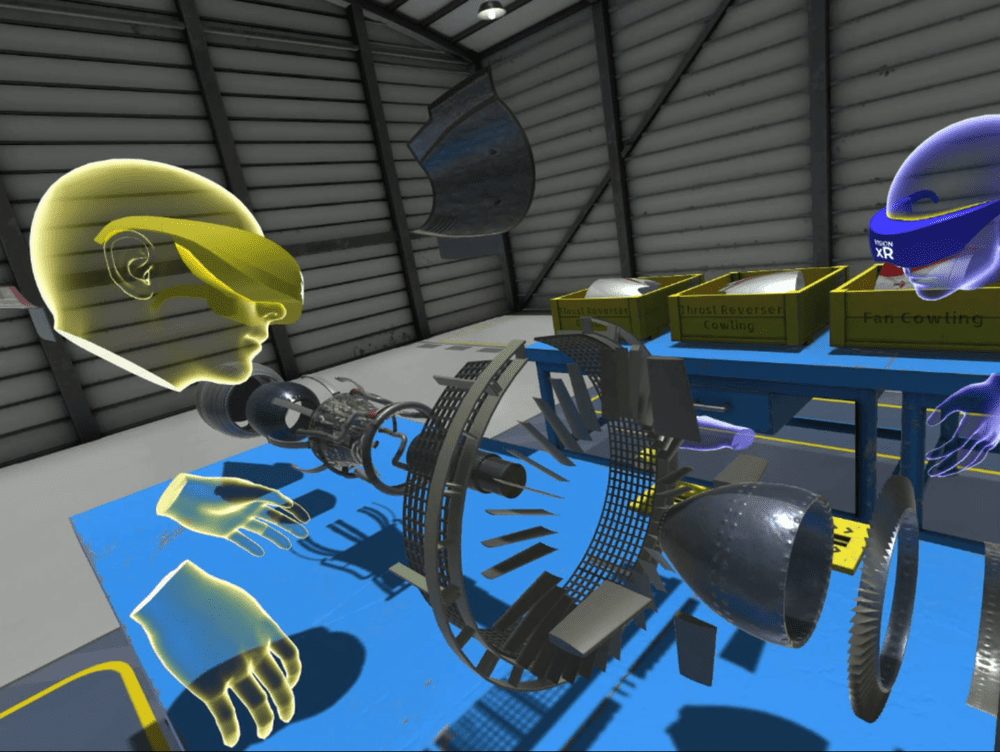
This has significant tangible benefits. It means that training takes place in a safe, but practical environment and minimises any downtime that might otherwise be needed for training to take place in the real-world workplace. By getting hands-on experience which can be repeated, employees learn faster and deeper. Rather than being shown how to carry out a task, they can get to do it themselves and make risk-free mistakes that they can learn from to hone their skills.
It also means that employees can learn together, working on interdependent tasks together, just as they would in reality. By using VR tools, employees aren’t learning in their own little bubble, but they can see how their role fits and impacts on their colleagues’ work, and crucially, learn from other people’s skills and abilities too.
It also highlights how VR can support on the job coaching experiences – both as a tool to map performance over a long period of time, through to the immediacy of a coach participating with a trainee within the experience itself. The coach can join the employee in the virtual space to support the learning process, supporting the learner to work through challenges, intervening as and where necessary to help the learner to improve their own performance.
Moreover, as VR training can be monitored and recorded, it makes a great tool to review performance. The success of on the job training is often difficult to assess, and will often be measured by failure, as mistakes will highlight ongoing gaps in skills. With VR, an employee is monitored throughout the experience, which can feed directly into HR records as well as be re-visited to assess where the employee may need to continue to practice their skills, or where additional training is required.
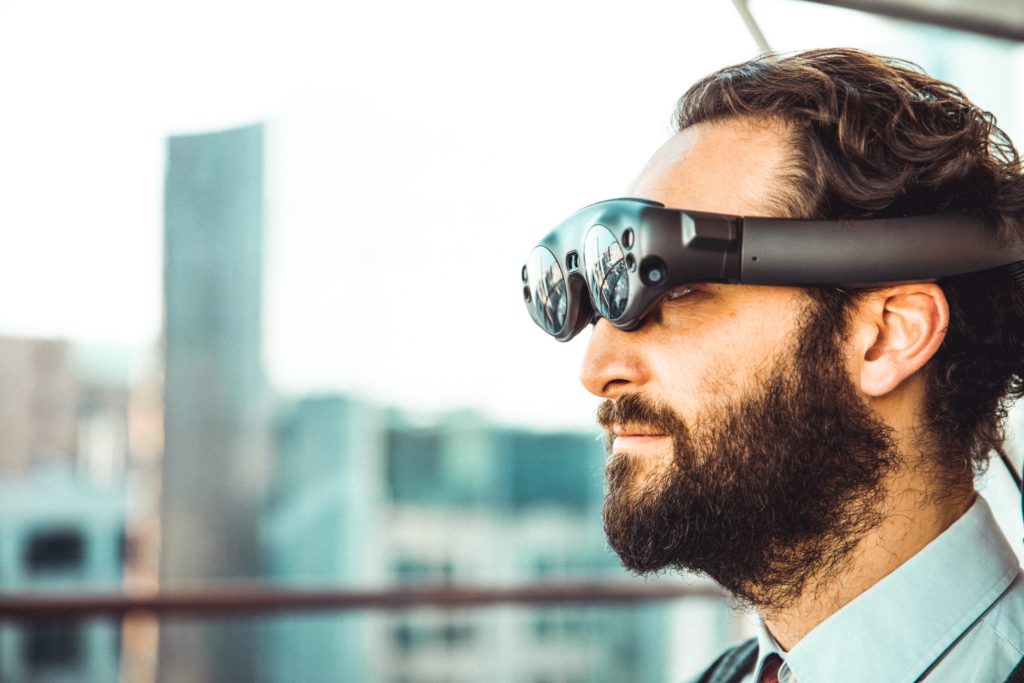
Iron Man technology in the workplace: augmented reality guiding the way
For many technical and process-driven roles, user manuals provide critical help to carry out certain job functions, giving them a step-by-step guide that can be referred to when carrying out specific tasks, acting as a prompt to fill in gaps in knowledge.
Augmented reality (AR) takes the concept of a user manual – and supercharges it. It works by overlaying the real world with a digital layer without the requirement for expensive kit, as AR tools can be accessed from widely available devices such as smartphones and tablets. This, in effect means that employees can have a comprehensive guide to carrying out tasks wherever they are and whenever they need it without the need for additional supervision, allowing immersive technology to help fill in any gaps in knowledge in a real life working environment.
The implications of augmented reality supported on the job training are vast. From process-driven manufacturing environments through to intricate surgical procedures, augmented reality training support can support individuals to be freed from the requirements to, in effect memorise how to carry out tasks. By having step by step guides at their fingertips, it frees the employee to concentrate on the task in hand and undertake their work to a higher level of quality and accuracy. What’s more, there’s growing evidence to suggest that augmented reality can speed up the time taken to undertake procedural tasks.
An innovative future for on the job training?
With the chance to transform how we learn how to do our jobs better, safer and more accurately – as well as learning new skills and building our knowledge base- employers and employees alike are waking up to the potential power of immersive technologies. Businesses benefit from a highly trained and efficient workforce and employees can improve their skills and employability – it’s a win-win situation. And moreover, the future of on the job training is here now, in reality.
To get in touch to discuss your next project contact us here: https://www.futurevisual.com/contact/
Introduction
By training in the workplace, as opposed to in an offsite classroom based environment, structured on the job training methods offer successful ways to make sure that employees have the skills they need to work safely and productively. What’s more, it’s often cost effective for employers and ensures that employees learn skills quickly and retain knowledge for longer.
On the job training is tried and tested across all types of workplaces and sectors. From being coached by a colleague through to being armed with a user manual for technical tasks, on the job training tools and techniques work for employers and employees alike. But over recent years, businesses have been turning to digital innovation to boost workplace learning and put their business ahead of the game.

How immersive technologies are revolutionising on the job training
From fully immersive virtual reality (VR) experiences to augmented reality that mixes real and digital worlds, immersive technologies and on the job training are a match made in heaven. As immersive experiences often use a human-centred design approach during development, they fit seamlessly with the objectives of on the job training interventions, which are tailored to an individual’s training needs, rather than trying to impose a “one size fits all” approach.
Like other forms of on the job training such as online training platforms or demonstrator videos, immersive experiences are short and address specific skills issues. From a practical perspective this means that training can be fitted around work schedules, rather than making employees spend days away from their workplace on costly training courses. It also means that the learner can access training when it is convenient for them, focus their attention and repeat experiences when necessary. This helps them to learn faster and retain knowledge for longer. What’s more, immersive experiences can also be easily introduced at scale and can respond to changing environments and working practices.
On the job training – well, virtually
Future Visual’s training platform, VISIONxR™ perfectly demonstrates how virtual reality can be used in the workplace to support on the job learning. Virtual reality experiences take digital learning to the next level of engagement and involve the learner in a practical, hands-on way. It transports training into a virtual workplace, where employees can work and learn together on tasks replicated from their real world working environment.

This has significant tangible benefits. It means that training takes place in a safe, but practical environment and minimises any downtime that might otherwise be needed for training to take place in the real-world workplace. By getting hands-on experience which can be repeated, employees learn faster and deeper. Rather than being shown how to carry out a task, they can get to do it themselves and make risk-free mistakes that they can learn from to hone their skills.
It also means that employees can learn together, working on interdependent tasks together, just as they would in reality. By using VR tools, employees aren’t learning in their own little bubble, but they can see how their role fits and impacts on their colleagues’ work, and crucially, learn from other people’s skills and abilities too.
It also highlights how VR can support on the job coaching experiences – both as a tool to map performance over a long period of time, through to the immediacy of a coach participating with a trainee within the experience itself. The coach can join the employee in the virtual space to support the learning process, supporting the learner to work through challenges, intervening as and where necessary to help the learner to improve their own performance.
Moreover, as VR training can be monitored and recorded, it makes a great tool to review performance. The success of on the job training is often difficult to assess, and will often be measured by failure, as mistakes will highlight ongoing gaps in skills. With VR, an employee is monitored throughout the experience, which can feed directly into HR records as well as be re-visited to assess where the employee may need to continue to practice their skills, or where additional training is required.

Iron Man technology in the workplace: augmented reality guiding the way
For many technical and process-driven roles, user manuals provide critical help to carry out certain job functions, giving them a step-by-step guide that can be referred to when carrying out specific tasks, acting as a prompt to fill in gaps in knowledge.
Augmented reality (AR) takes the concept of a user manual – and supercharges it. It works by overlaying the real world with a digital layer without the requirement for expensive kit, as AR tools can be accessed from widely available devices such as smartphones and tablets. This, in effect means that employees can have a comprehensive guide to carrying out tasks wherever they are and whenever they need it without the need for additional supervision, allowing immersive technology to help fill in any gaps in knowledge in a real life working environment.
The implications of augmented reality supported on the job training are vast. From process-driven manufacturing environments through to intricate surgical procedures, augmented reality training support can support individuals to be freed from the requirements to, in effect memorise how to carry out tasks. By having step by step guides at their fingertips, it frees the employee to concentrate on the task in hand and undertake their work to a higher level of quality and accuracy. What’s more, there’s growing evidence to suggest that augmented reality can speed up the time taken to undertake procedural tasks.
An innovative future for on the job training?
With the chance to transform how we learn how to do our jobs better, safer and more accurately – as well as learning new skills and building our knowledge base- employers and employees alike are waking up to the potential power of immersive technologies. Businesses benefit from a highly trained and efficient workforce and employees can improve their skills and employability – it’s a win-win situation. And moreover, the future of on the job training is here now, in reality.
To get in touch to discuss your next project contact us here: https://www.futurevisual.com/contact/

